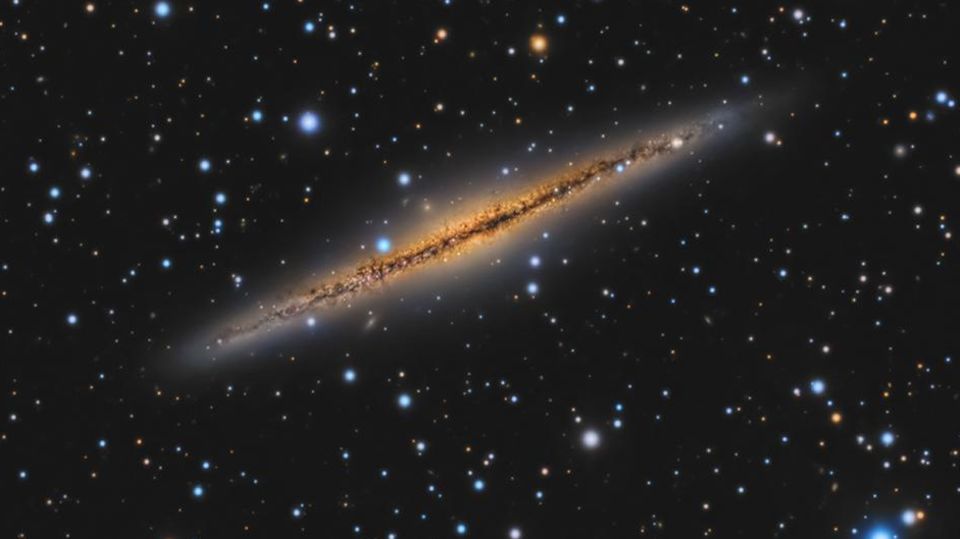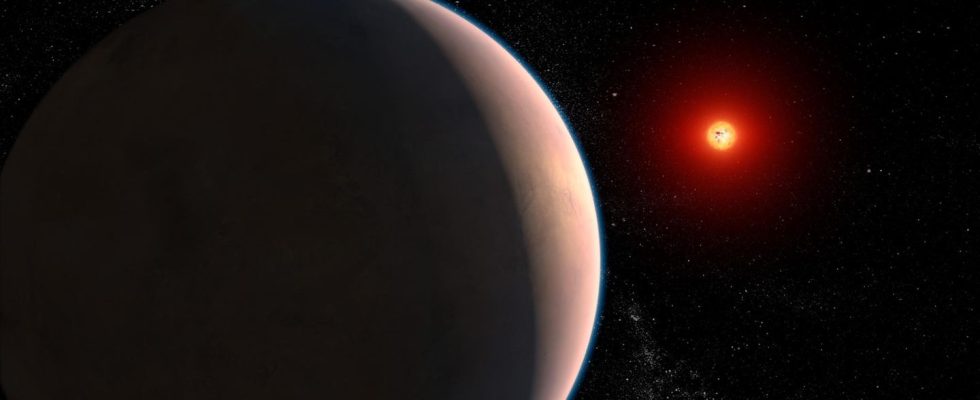space exploration
James Webb Project may have discovered an Earth-like planet with its own atmosphere
Artificial rendering of exoplanet GJ 486 b, where astronomers searched for signs of an atmosphere and found evidence of water vapor
© Illustration: Nasa, Esa, CSA, Joseph Olmsted, Leah Hustak
James Webb Project scientists have found signs of water vapor associated with a new exoplanet. If the assumption is confirmed, this would be a milestone in space research.
Let’s imagine we had to leave the earth. Not in the sense of dying, but quite literally in the sense of leaving. What would it take to be able to live on another planet? Basically, these are – in addition to a lot more – air to breathe, food and water. These three elementary things are granted to us by our earth’s atmosphere and it is exactly this that the scientists of the James Webb Project, who have now discovered the exoplanet GJ 486 b, were looking for.
James Webb Project studies planet GJ 486 b for water vapor
There were signs of water vapor, as the US space agency Nasa explains on its website, although there were still some question marks there. If this water vapor does indeed come from a layer of the atmosphere, it would be a huge step towards discovering another potentially habitable planet besides our Earth.

Photo: Jason Guenzel
Astronomers discovered the planet GJ 486 b two years ago and have now been able to explore numerous details of the celestial body. It is relatively close to our solar system at a distance of 26 light years and belongs to the constellation Virgo (Virgo). The rocky exoplanet is about 30 percent larger than Earth and has an average temperature of about 427 degrees Celsius. Most importantly, it is showing signs of water vapor — suggesting it may have an atmosphere that envelops the planet.
astronomy
‘Fast’ – China’s giant radio telescope is searching for life in space
But another, less euphoric explanation of the discovery seems possible. The detected vapor could also originate from the outer layer of a dwarf star close to the planet, from where it escaped by encountering solar heat.
Even the Sun itself sometimes has water vapor in its sunspots because those areas are much cooler compared to the surrounding surface. In view of the fact that the mentioned dwarf star is much cooler than the Sun, the Webb researchers explain that it would therefore be just as plausible that the water vapor that has now been discovered could also be a matter of a similar mode of formation.
In any case, scientists will need several more observations to be able to determine with certainty whether the exoplanet GJ 486 b actually has an atmosphere and how much water, if any, is present.
Sources: NASA, Cornell University, Mashable



